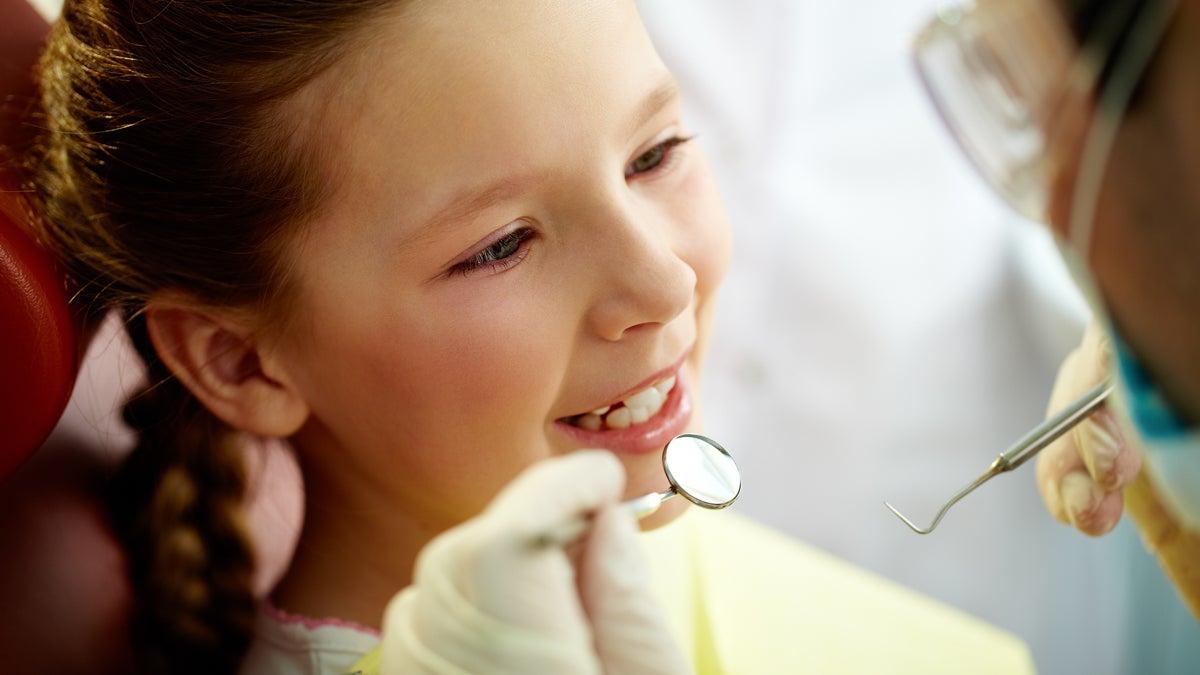Protecting baby teeth to pre-empt costly dental fixes later in life

(Photo via ShutterStock)
For kids who don’t get to the dentist twice a year as recommended, the pediatrician’s office may be a good place to nudge families into good dental-health habits.
Pediatrician Katie McPeak cares for kids in North Philadelphia where she leads the Center for the Urban Child. The practice is part of St. Christopher’s Hospital for Children.
Many of her patients are enrolled in the Medicaid program, and McPeak said about 40 percent of them will have a least one cavity by kindergarten.
The Medicaid program now reimburses pediatricians when they provide certain preventive dental care.
“We’re not doing a full comprehensive exam, we don’t fill cavities here, but we do apply fluoride varnish for all kids under age 5, because we know that painting those teeth prevents the sugar and bad guys from getting at the tooth,” McPeak said.
Protecting baby teeth can reduce the need for future costly dental fixes.
By email, Robert Delarosa, president of the American Academy of Pediatric Dentistry, said varnish programs can increase oral health awareness for families.
“The ultimate goal is still to have all patients established in a dental home, where comprehensive oral health care can be provided,” he said.
His group wants families to have a relationship with a dentist by the time a child is 1. Delarosa said dental professionals can assess a child’s risk for cavities, and then decide if — and how often — fluoride treatment is needed.
That’s ideal, health advocates say, but many families who get health care through Medicaid don’t have a dental home although the program offers dental benefits. Nationwide, just 41 percent of Medicaid-enrolled kids received preventive dental care in 2011-2012.
In 2008, the Centers for Medicare and Medicaid Service outlined some of the barriers to children receiving dental care. Limited availability of dental providers was on the list.
In a blog post last fall, Katherine Yun, a pediatrician and researcher with the PolicyLab at The Children’s Hospital of Philadelphia, wrote that cavities are disproportionately a disease of poverty.
“Children living at less than 200% of the federal poverty level (about $24,000 for a family of four) are twice as likely to have untreated tooth decay as other children,” she wrote.
“Kids have to get up to date on their vaccines, and have physical exams to attend school, but they are not required to see a dentist twice a year as recommended,” said Colleen McCauley, health policy director with Public Citizens for Children and Youth.
“I also think some parents and kids associate dental care with discomfort and pain, even though very often there is none of that during their visit, but they avoid getting the dental care because they think it’s going to hurt,” she said.
Every year, Public Citizens for Children and Youth, organizes a day of free dental care for children in Philadelphia and Delaware counties.
McCauley says her group booked appointments for about 400 kids and surveyed their parents. Most of the children were Medicaid eligible and had access to dental care, but 52 percent of parents said they didn’t know how to find a dentist that accepts their insurance.
Parents can call the 1-800 number on the back of their Medicaid or CHIP health plan card and ask the member services representative for the names of dentists in their community. Each health plan also has an online provider directory, so with Internet access, members can enter their home ZIP codes to find an in-network dentist.
WHYY is your source for fact-based, in-depth journalism and information. As a nonprofit organization, we rely on financial support from readers like you. Please give today.

